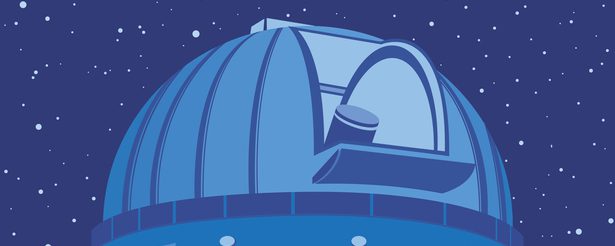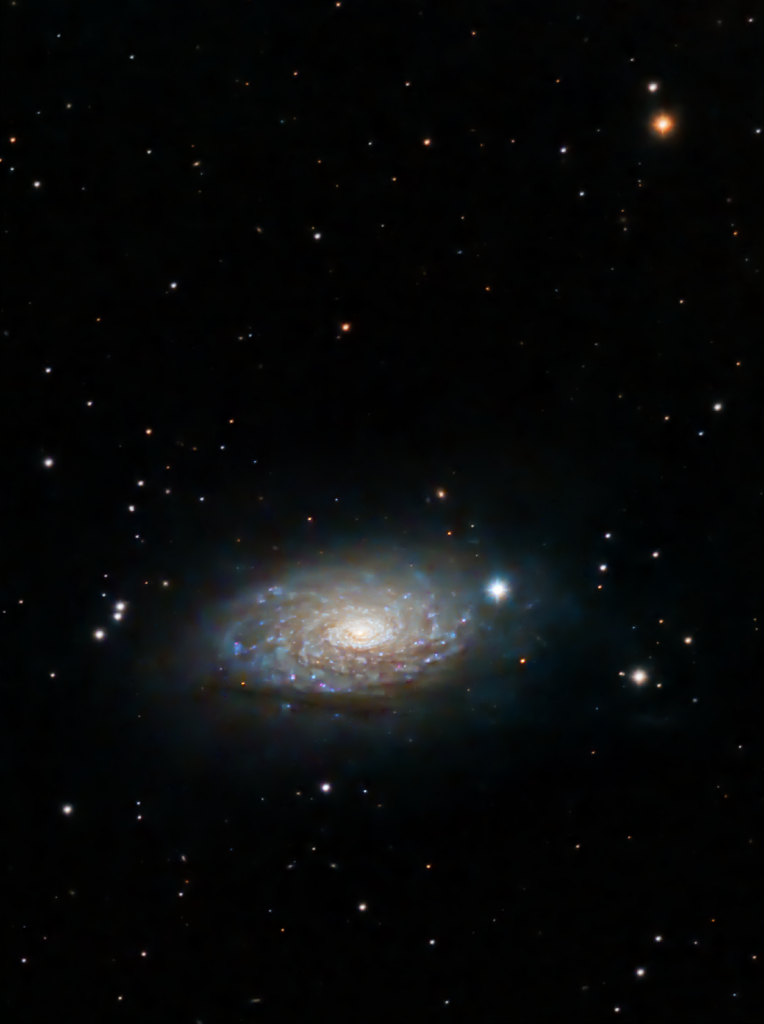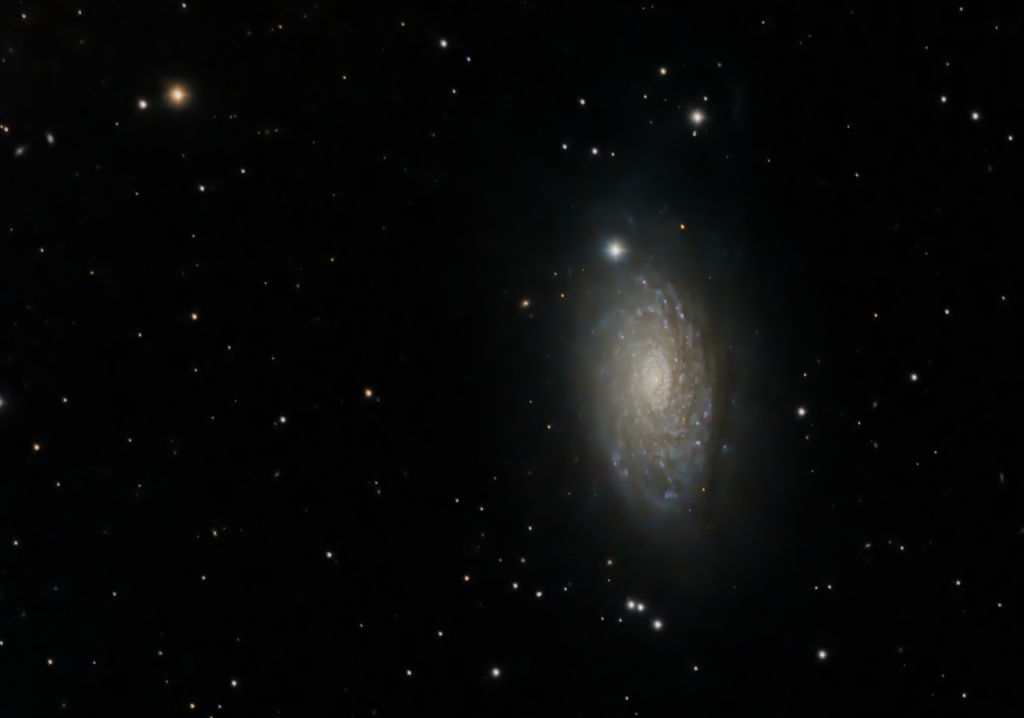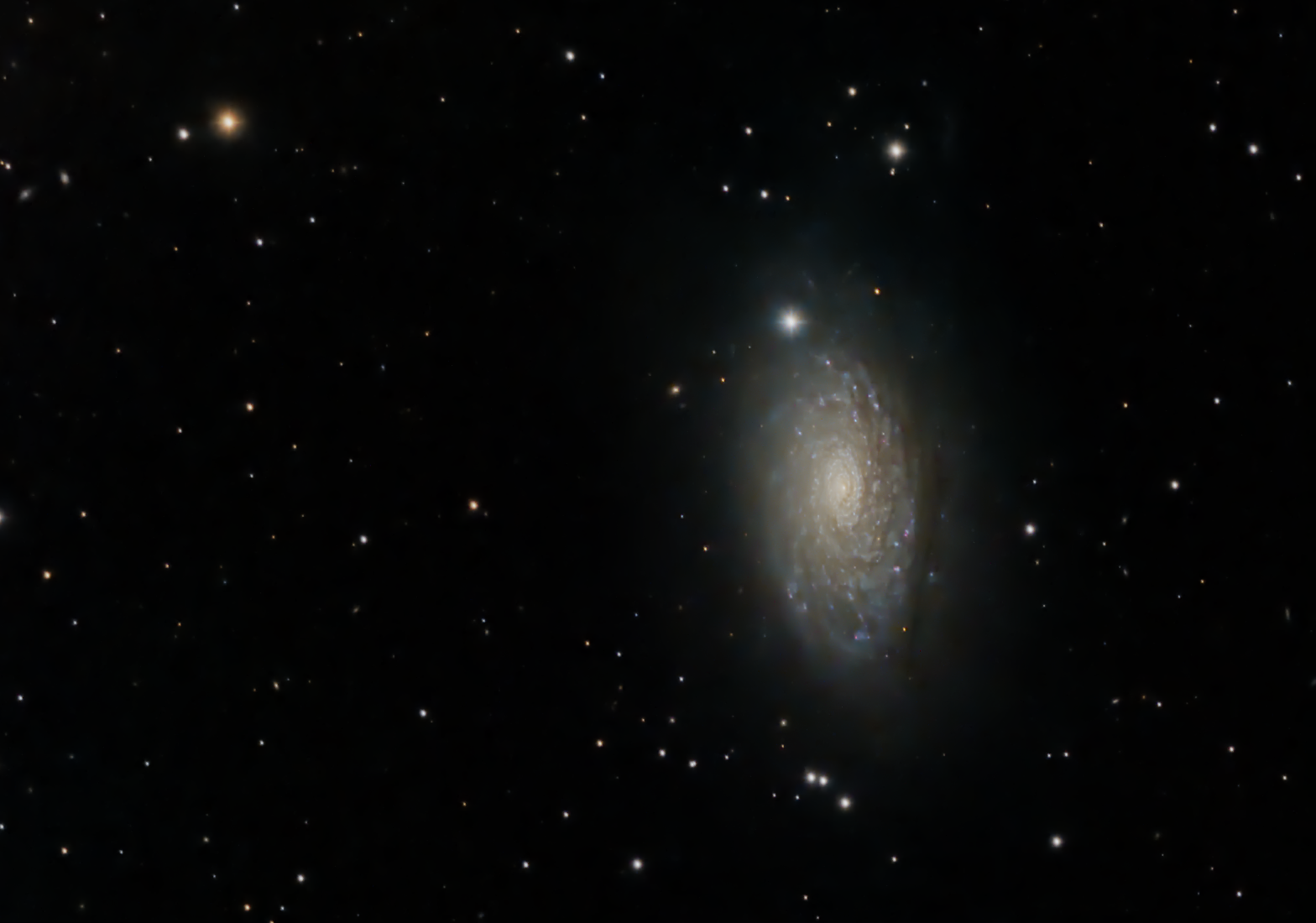
Similar Posts
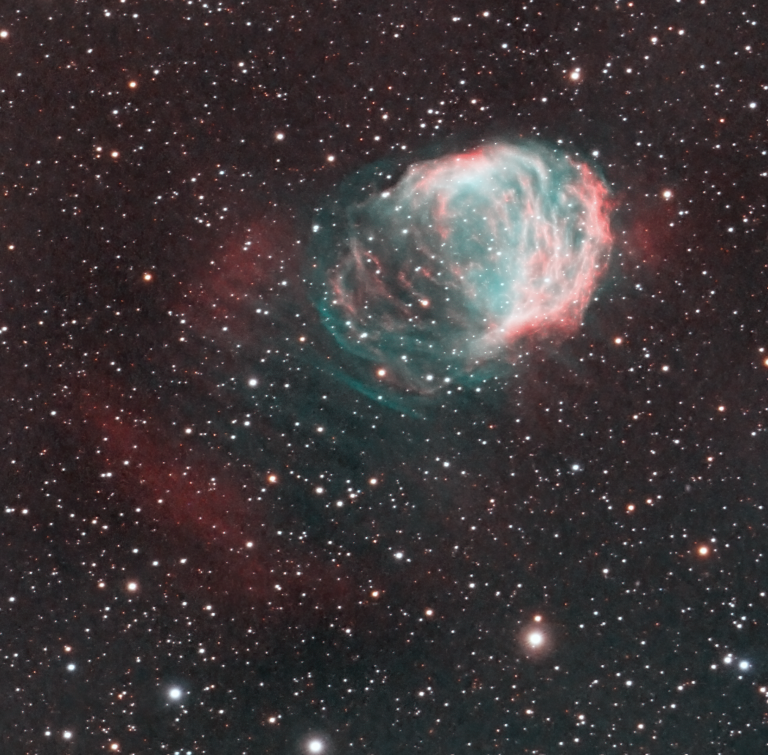
The Medusa Nebula
This is planetary nebula PK205+14.1, but its common name “The Medusa Nebula” rolls off the tongue a little better. About 1500 light-years away within the constellation Gemini, you’re seeing the gas blown off by a small star that ran out of fuel, and blew up into a red giant – later to end its life…
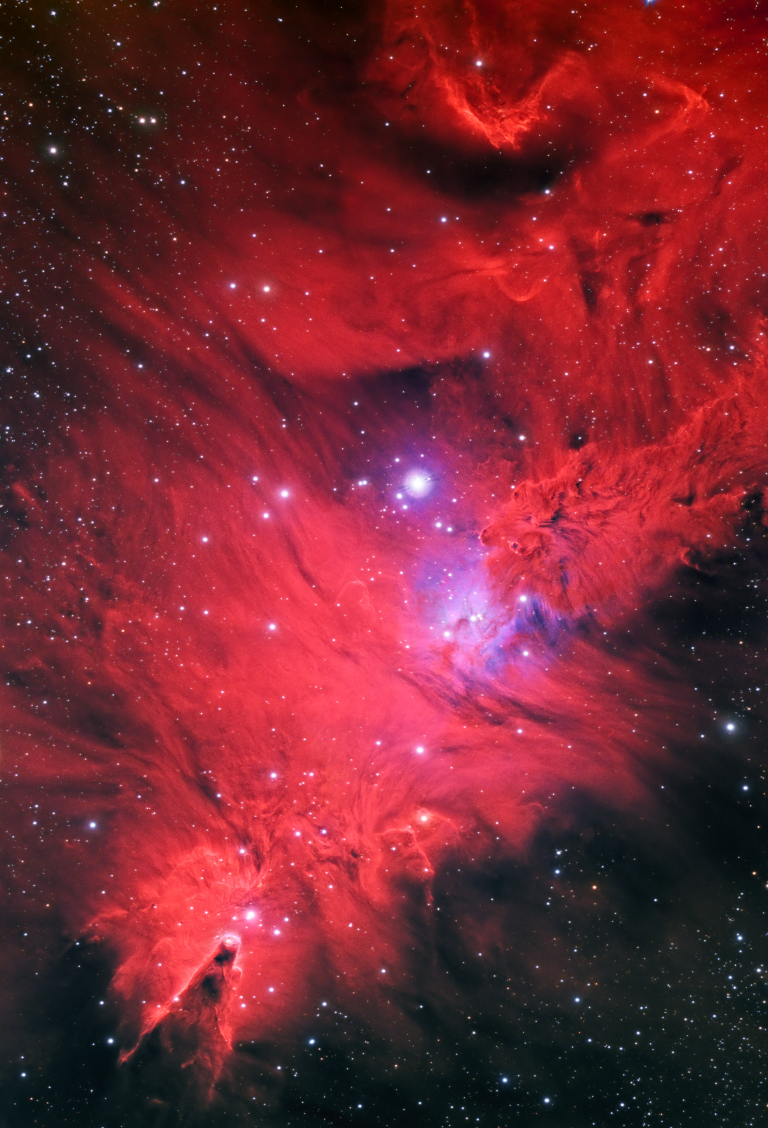
Going deep on the Cone and Fox Fur Nebulas
About 2,700 light-years away within the constellation Monoceros lies the Cone and Fox Fur Nebulas, containing the “Christmas Tree Cluster” of stars as well. I’ve imaged this many times before, but have never been happy with the results. By combining data from last year with more data collected this year however, I finally got enough…
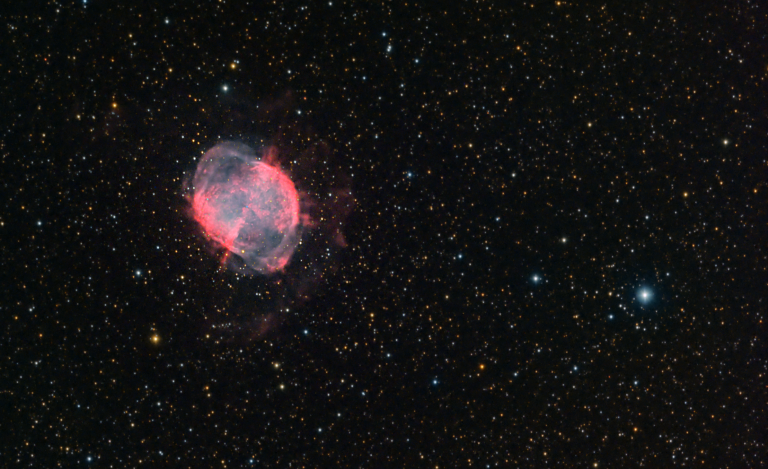
The Dumbbell Nebula
The Dumbbell Nebula (M27) is what’s called a planetary nebula – but it has nothing to do with a planet. This shell of gas was blown out by a dying star; once it started to run out of Hydrogen to burn, it expanded and blew out the gases you see here. The star then collapsed…
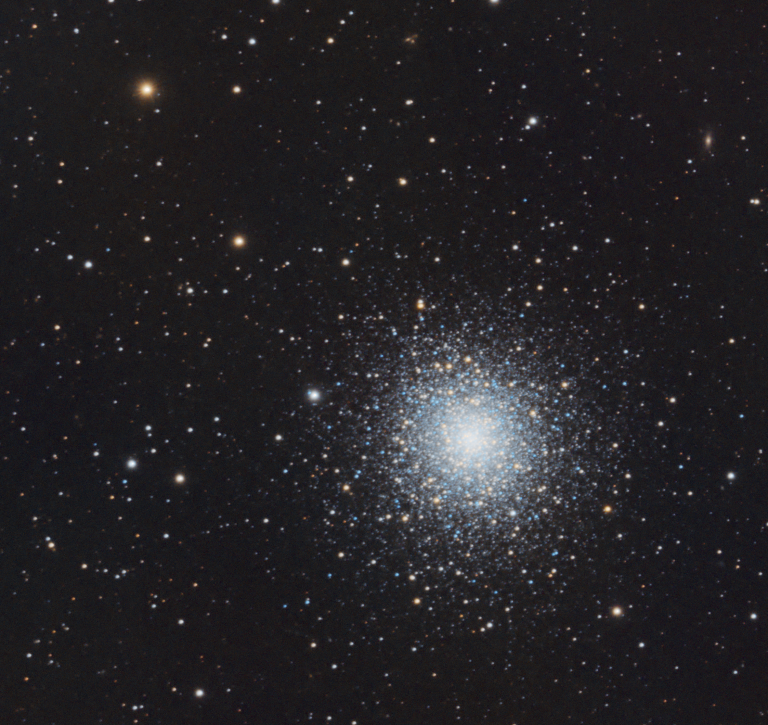
Globular cluster M92
Also in Hercules, M92 is often passed over for its larger and more dazzling neighbor, M13. But M92 is pretty in its own way! It’s also one of the oldest globular clusters in our galaxy (over 11 billion years old) and has some very interesting background galaxies around it too.
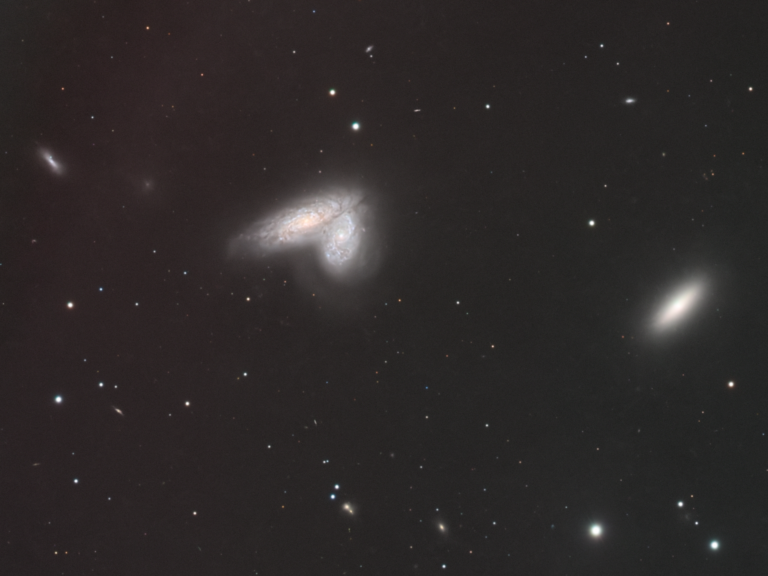
The Butterfly Galaxies
The galaxies NGC4567 and NGC4568 are colliding 60 million light-years away. This is really pushing the resolution limits here; we had good “seeing” last night meaning not a lot of turbulence to smear out the light reaching my telescope, and I carefully collimated and calibrated things prior to imaging last night. About as good as…
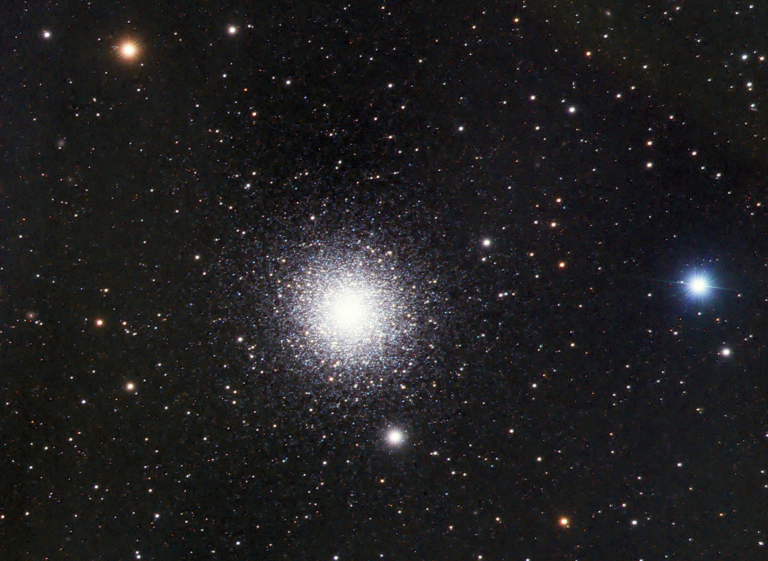
Globular Cluster M15
Located about 33,600 light-years away within the constellation Pegasus, Messier 15 is a globular cluster – a tight, ancient ball of stars on the outskirts of our galaxy. The Milky Way is surrounded by many such clusters; this one’s special because it’s known to host a rare intermediate-sized black hole at its center, and it…
